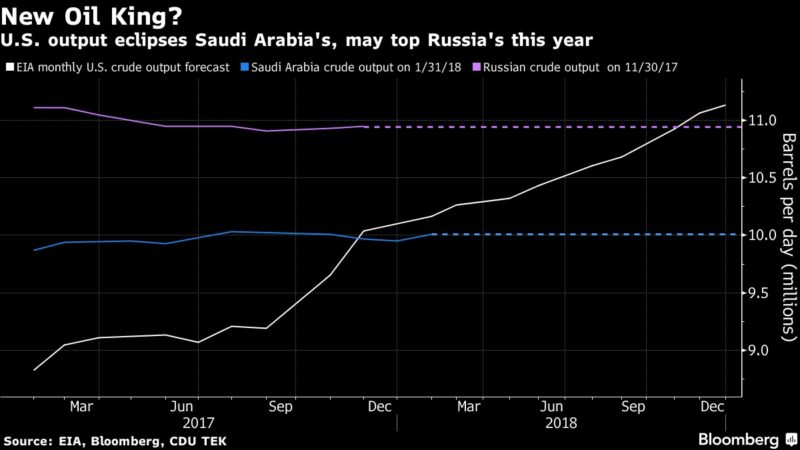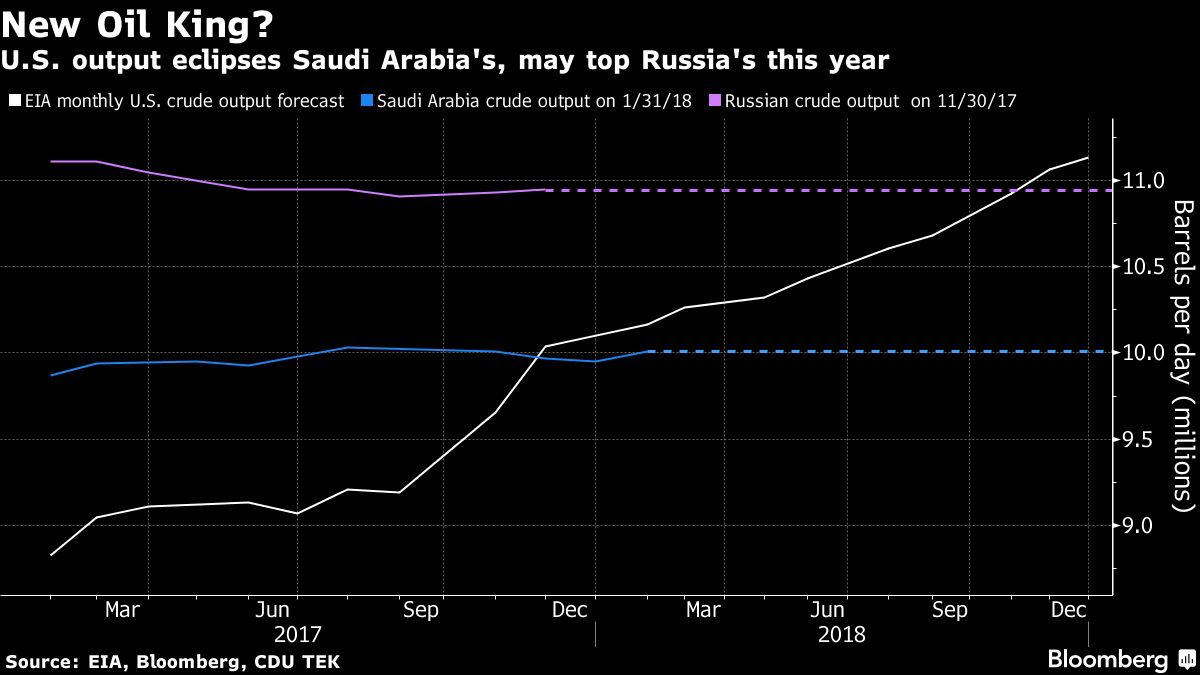
By David Wethe and Sheela Tobben (Bloomberg) — The latest example of America’s turnaround from buyer to supplier in the global oil market can be seen 20 miles off the coast of Louisiana.
There, buoys that served as critical infrastructure for bringing crude into the U.S. for more than 30 years are being readied for the exact opposite purpose: pump oil into massive tankers for shipments around the globe.
Using the Louisiana Offshore Oil Port is emblematic of the upended U.S. oil market, where declining domestic production since the 1970s had turned Gulf of Mexico refineries into avid consumers of foreign crude.
Now, thanks to the shale boom that vaulted the U.S. to the ranks of top producers Saudi Arabia and Russia, older systems designed to move crude north from the Gulf are getting a second look for new uses. While the Louisiana hub would likely be used to ship crude produced in nearby offshore fields, that oil would probably be heading for U.S. refineries if it weren’t for the abundance of production coming from shale plays.
“For 40 years, our entire infrastructure was being built from the south to the north — that is our entire infrastructure direction,” Paul Cheng, an analyst at Barclays, said Tuesday in a phone interview. “And for the last 10 years, we’ve been very actively reversing that direction.”
American crude production has topped 10 million barrels a day, and the government forecasts it will surge to 11 million later this year.
Being able to load very large crude carriers, which is industry terminology for massive tankers that hold 2 million barrels of oil, will significantly cut the cost of shipping cargoes overseas. At ports in Corpus Christi and Houston, which currently handle the most exports, smaller vessels are needed to ferry the fuel out to the 1000-foot-long ships waiting in deeper waters.
But that’s not a problem for the LOOP, which has long been the biggest entry point for U.S. oil imports, offering super tanker buoys for hooking up hoses 20 miles offshore in 100 feet of water. On the LOOP’s website early Tuesday, officials said they’re testing modifications from last year to be able to export oil.
Even if LOOP finds it can load a super tanker for export seamlessly, its shipment volumes will likely be limited as it also handles oil imports. LOOP pumps crude from ships at the offshore buoys through a 45-mile pipeline to onshore tanks at Clovelly, Louisiana.
Different Crudes
Oil already sitting in the pipe, known as linefill, kick-starts the discharge of supplies from the vessel. Much of that linefill is the heavy, high-sulfur crude that LOOP typically receives. By contrast, most of the U.S. exports would be light and low sulfur.
One solution would be to empty the pipe into a tank and refill it with another type of crude similar to the export cargo before a ship pulls up to receive it, Sandy Fielden, director of research and commodities for Morningstar Inc. in Austin, Texas, said in a phone interview.
“Logistically it’s going to be complicated,” Fielden said. “Even if it’s bidirectional pipe, it still is single pipe. Until they build a parallel pipe, they will have to limit how often to do exports.”
The decades-old LOOP may also need the help from some other legacy gear in the oil patch being looked at for a reversal in flow.
Marathon Petroleum Corp. has said it’s gauging interest for possibly reversing the flow of oil southward for its Louisiana-Illinois Capline. If it goes ahead, the pipeline project would be ready in the second half of 2022, at an initial capacity of 300,000 barrels a day.
It will likely take a number of years for the LOOP to become a dominant exporting hub, Cheng said. And even so, the terminal will still be called upon for importing as well.
“You want to test it out,” Cheng said. “You want to arm yourself so that when the time comes, we can use it all at the same time.”
© 2018 Bloomberg L.P

 Join The Club
Join The Club











